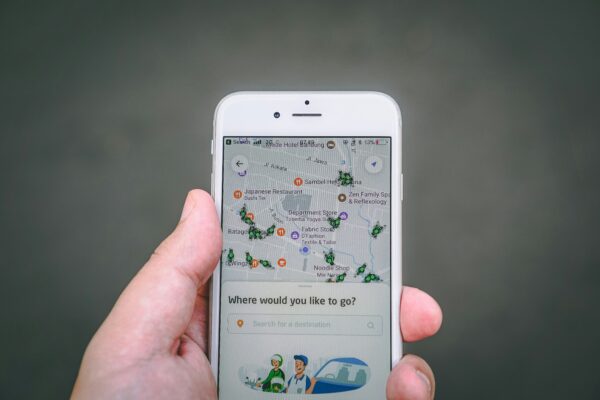Table of Contents

Traveling through Europe is a dream for many, offering a captivating mix of cultures, languages, historical landmarks, and culinary experiences. However, the vast diversity and fast-paced nature of the continent can also pose logistical challenges, especially for those who are navigating multiple countries, currencies, and transit systems in a short span of time. That’s where travel apps come into play. These digital tools are not just convenient—they’re essential for making your journey across Europe as seamless, efficient, and enjoyable as possible.
Whether you’re booking last-minute accommodations, translating foreign signs, planning train routes, or looking for the best local eateries, travel apps serve as your pocket-sized travel companion, available at all times. With the right apps, your trip transforms from stressful to stress-free, allowing you to focus on creating memories instead of solving problems. The first step to mastering your European journey begins with your smartphone, and this blog will help you harness its full potential.
Navigation Made Easy: Finding Your Way in European Cities with Travel Apps
Navigating unfamiliar streets, deciphering public transport systems, and ensuring you don’t get lost in a maze of cobbled alleys is a major concern for many European travelers. That’s why one of the first travel apps you need is a solid navigation tool. Apps like Google Maps, Citymapper, and Maps.me offer real-time directions, offline maps, and transit integration tailored to European cities. With travel apps, finding your hotel, the nearest train station, or even a hidden gem of a café becomes effortless. Google Maps is excellent for comprehensive directions, including walking and cycling routes.
Citymapper, on the other hand, excels in public transport planning, showing multiple options, costs, and time estimates for urban commutes in cities like London, Berlin, and Barcelona. If you’re heading to rural areas or planning a road trip, Maps.me provides downloadable maps for offline use, which is essential when mobile data is limited. These travel apps are not only reliable but also user-friendly, making them suitable for tech-savvy users and digital novices alike. When exploring places where signage may not be in English or the layout is complicated, a dependable navigation app helps save time and reduces anxiety.
Many travel apps also offer reviews and local business listings, so you can pair your journey with real-time insights. Using the best travel apps for Europe means never being lost, always knowing where you’re going, and discovering places you may never have found on your own. These tools empower independent travel while enhancing safety and convenience, especially in unfamiliar environments.

Booking and Planning Tools: Travel Apps to Manage Itineraries, Flights, and Hotels
One of the biggest advantages of modern travel apps is their ability to streamline booking and itinerary management. Gone are the days of printing flight confirmations, hotel vouchers, and tickets for each attraction. With travel apps like Skyscanner, Booking.com, Airbnb, and TripIt, you can organize every detail of your European trip in one place. Skyscanner helps you find the cheapest flights across various carriers, including budget airlines common in Europe like Ryanair and EasyJet. It also offers flexible search options, allowing you to find the best travel dates and destinations based on price.
Booking.com and Airbnb give you access to thousands of accommodation options—from luxury hotels to cozy apartments—often with user reviews and flexible cancellation policies. For travelers hopping between countries, TripIt automatically consolidates your bookings into a single, easy-to-read itinerary, so you know where you need to be and when. These travel apps aren’t just about convenience; they save time, reduce paperwork, and offer peace of mind. Many platforms also offer push notifications for gate changes, weather alerts, or COVID-19 updates, keeping you informed at all times.
When considering the best travel apps for Europe, prioritize those that integrate well with other tools and offer offline functionality for when you’re off-grid. These apps also allow for easy collaboration with friends or travel partners, ensuring everyone stays on the same page. Managing a European adventure across different languages, currencies, and transport systems is complex—but with these travel apps, it becomes manageable and even enjoyable.
Budgeting Abroad: Travel Apps That Help You Track Spending and Save Money
Europe can be expensive, especially in major cities like Paris, Zurich, or Copenhagen. That’s why budget-conscious travelers rely heavily on finance-focused travel apps to manage expenses while abroad. Budgeting travel apps like Trail Wallet, Splitwise, and XE Currency make it easier to track daily spending, split costs with friends, and convert currencies in real time. Trail Wallet lets you set a daily budget and categorize your expenses so you can quickly see where your money is going. It’s perfect for long-term travelers or those visiting multiple countries. Splitwise is essential for group travel—no more awkward conversations about who owes what. Simply log expenses, and the app calculates individual shares automatically.
XE Currency offers up-to-date exchange rates and a built-in calculator, helping you avoid being overcharged or confused by local prices. These travel apps make financial planning on the go less stressful and more transparent. With constant access to your spending habits, you’ll know when to splurge and when to save. Many travelers use these tools to allocate funds for food, transport, attractions, and shopping, ensuring a well-balanced travel experience.
The best travel apps for Europe not only simplify budgeting but also protect you from overspending. They provide visual graphs and data that can help adjust your habits mid-trip. With rising travel costs and unpredictable expenses, having a digital financial assistant in your pocket is more than a convenience—it’s a necessity. By choosing the right budgeting travel apps, you can enjoy Europe without breaking the bank or sacrificing experiences.

Language and Communication: Breaking Barriers with the Best Travel Apps for Europe
Language can be one of the most intimidating aspects of traveling in Europe, where over two dozen official languages are spoken. Thankfully, translation and communication travel apps bridge the gap, allowing you to interact confidently with locals, read signs, and navigate menus with ease. Google Translate is one of the most powerful tools available. It offers text, voice, and camera translation for over 100 languages, many of which can be downloaded for offline use.
Simply point your phone’s camera at a sign or menu, and the app instantly displays the translation—a game-changer for travelers in places where English isn’t commonly spoken. Another standout is Duolingo, which gamifies language learning and helps you pick up basic phrases before and during your trip. It’s ideal for mastering essential words in French, German, Italian, or Spanish. For voice-based conversations, apps like SayHi or iTranslate facilitate real-time dialogue by speaking your translated words aloud. These travel apps are especially useful in rural areas or for interactions with older generations who may not speak English.
Communication travel apps also enhance cultural immersion, allowing you to appreciate the local environment more deeply and avoid misunderstandings. The best travel apps for Europe go beyond navigation and logistics—they make human connection easier. From asking directions to ordering food or making small talk, language travel apps turn potential barriers into bridges. Being able to understand and be understood enriches your travel experience, making it more meaningful, respectful, and enjoyable.
Discovering Hidden Gems: Travel Apps for Finding Attractions, Food, and Events
Europe is full of iconic landmarks, but the real magic often lies in the hidden alleys, local eateries, and community events that don’t always make the guidebooks. That’s where discovery-focused travel apps come into play. Platforms like Google Maps, Yelp, Culture Trip, and Eventbrite help you uncover unique experiences tailored to your interests and location. Google Maps, while primarily a navigation tool, features user reviews, photos, and busy-hour predictions for thousands of places, including cafes, museums, and landmarks. Yelp offers curated food and service reviews, helping you skip the tourist traps in favor of authentic local cuisine.
Culture Trip provides in-depth articles and guides written by locals or experienced travelers, showcasing lesser-known attractions and cultural insights. Eventbrite helps you find local events—from concerts and street festivals to yoga classes and art exhibitions—based on your current city. These travel apps make spontaneous exploration easier and more rewarding. With the best travel apps for Europe in your toolkit, you’re not limited to what’s popular—you can dive into what’s personal and memorable.
These tools use algorithms and user-generated content to recommend experiences that match your tastes, whether you’re an art lover, foodie, or history buff. The beauty of Europe lies not only in its famous attractions but also in its neighborhood secrets, and with the right travel apps, you can uncover them effortlessly. Travel becomes not just sightseeing but experiencing, with every corner holding potential for discovery.
Frequently Asked Questions
1. What are the best travel apps for navigating Europe?
Apps like Google Maps, Citymapper, and Maps.me are top choices for navigation. They provide real-time directions, public transit routes, and offline maps to help you move efficiently across European cities and rural areas.
2. Which travel apps are best for booking accommodations in Europe?
Booking.com and Airbnb are among the most reliable for finding hotels, apartments, and unique stays. Both offer extensive user reviews, flexible booking options, and mobile-friendly interfaces.
3. Are there travel apps that help manage trip itineraries?
Yes, TripIt is a standout app for consolidating your travel plans. It automatically imports flight, hotel, and activity confirmations into a single itinerary you can access anytime.
4. How can travel apps help with budgeting during my European trip?
Travel apps like Trail Wallet and Splitwise track your spending, convert currencies, and help split costs if you’re traveling in a group, making it easier to stay on budget.
5. What are the best travel apps for learning or translating European languages?
Google Translate, Duolingo, and SayHi are excellent choices. They help with real-time translations, camera-based sign reading, and conversational practice for common European languages.
6. Can travel apps help me discover hidden spots and local events?
Absolutely. Apps like Culture Trip, Eventbrite, and Yelp recommend local experiences, food, and events that often aren’t listed in traditional guidebooks.
7. What travel apps work best offline in Europe?
Maps.me, Google Translate (with offline packs), and Trail Wallet offer robust offline functionality so you can use them without internet access.
8. Do travel apps support public transportation schedules in Europe?
Yes, Citymapper and Moovit specialize in public transport data. They provide accurate schedules, route planning, and updates for buses, trains, trams, and metros.
9. Are there safety-focused travel apps for solo travelers in Europe?
Apps like SmartTraveler (by the U.S. Department of State) and GeoSure provide safety ratings, travel alerts, and emergency contacts tailored to your location.
10. How do travel apps improve overall travel experience in Europe?
Travel apps simplify every part of your trip—from planning and booking to navigating and exploring—ensuring your journey is smoother, more efficient, and more enjoyable.




1 comment. Leave new
The website design looks great—clean, user-friendly, and visually appealing! It definitely has the potential to attract more visitors. Maybe adding even more engaging content (like interactive posts, videos, or expert insights) could take it to the next level. Keep up the good work! Given the growing economic instability due to the events in the Middle East, many businesses are looking for guaranteed fast and secure payment solutions. Recently, I came across LiberSave (LS) — they promise instant bank transfers with no chargebacks or card verification. It says integration takes 5 minutes and is already being tested in Israel and the UAE. Has anyone actually checked how this works in crisis conditions?